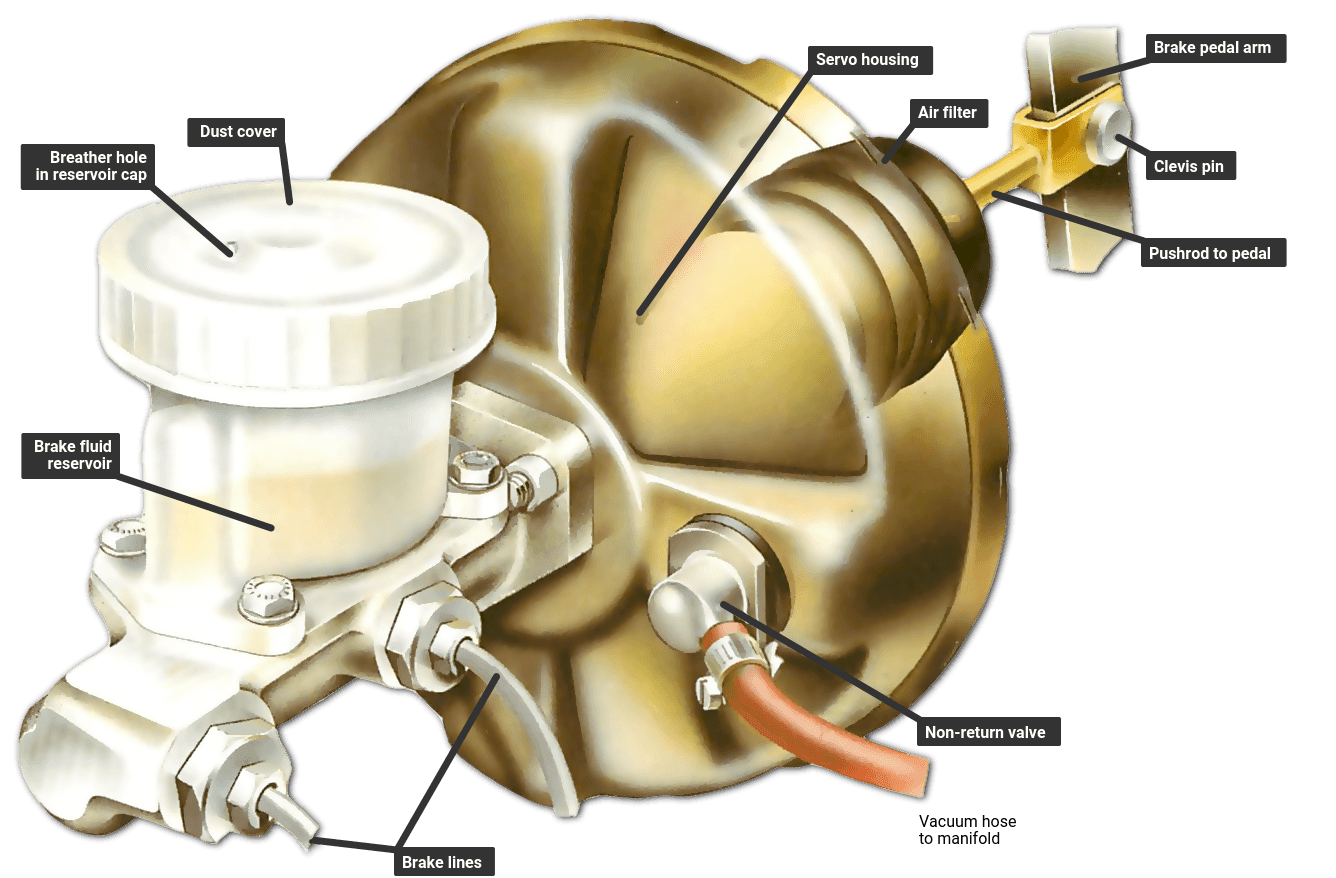MegaSack DRAW - 6pm Christmas Eve - LIVE on our YouTube Channel
I want to get more than just the small 100ml bottle but not sure the stuff in 1 litre bottles is the same stuff - it's certainly a lot cheaper. Is that because its different or just not got the cycling mark-up? 😉
Same stuff, but be aware that it does go off over time once opened as it absorbs moisture from the air. So it can be a false economy as you will probably never use the whole 1L bottle before it has gone off.
Thanks. We have a few sets of Avid brakes in the family fleet so even if I only use half the bottle it still works out cheaper.
Keep the top on as much as possible and avoid shaking the bottle when its open and it'll last on the shelf for many months (years in my experience).
I saw some DOT 5.1 in the car parts place when sorting the car recently and 1 litre was the same as the LBS charge for 100ml, the guy behind the counter advised that the DOT stands for Department of Transport so all DOT fluids will be equal regardless of price or branding.
He says he sells lots to the local LBS, my guess its what they use in the workshop. As Ajantom says, watch out as it does "go off" though by absorbing moisture.
I’m sure there was a post on here last year where someone did the math about dot fluid absorbing water and proved that for use in a bike it’s a bit of a myth.
Car brake systems and most bike systems are vented to atmosphere anyhow - you are supposed to change car fluid every two years but I'd bet most people don't bother so a bottle of fluid with the lid on tight will last for years.
Bike brakes are not vented to atmosphere. All modern brakes are "open" but what that actually means is that there's a reservoir with a bladder in it. The system overall is still sealed, and the only air that the fluid is in contact with is bubbles that didn't get bled out properly.
"Car brake systems and most bike systems are vented to atmosphere anyhow "
where abouts are these vents ?
where abouts are these vents ?
In a car it is normally a small hole in the cap.

that hole is sealed from the fluid. the fluid is not vented to atmosphere.
That hole is the backside of the diagphragm/seal to change volume and allow expansion of the chamber that the fluids stored in during operations.
Cars and bikes are different on this point. Bikes have a diaphragm which is why fluid doesn't leak out when you turn them upside down. Cars don't, which is why you can remove the cap on the reservoir and pour fluid in.
I've never turned my car upside down and I don't intend to. Isn't there a diaphragm thingy in the cap?
http://www.mossmotoring.com/brake-fluid-tech/
http://www.mossmotoring.com/brake-fluid-for-classic-british-cars/
yes the diaphragm is in the cap with a hole in the cap to equalise pressure - but in cars you often get air above the fluid but below the diaphragm.
I have a half litre bottle of brake fluid I have been using for a few years. As the cap is only off the bottle for a few seconds its not going to absorb much water from the air.
I have no issue with using decent sized bottles of fluids and not paying the bike tax
They're not all the same- Dot 5.1 is a minumum standard, some will just exceed it, some will smash it. But they'll all be good as the 5.1 spec is pretty high. TBF, good bike brakes don't really need high performance fluid, what your mostly getting is extra margin for error- 5.1 can be pretty wet and still do the job, if you're cutting corners.
I usually buy the little halfords bottles, they're a good size- last for loads of bleeds and replacements, a bigger bottle is better value but is more than you're going to need for a long time (probably- different people will waste different amounts or have to redo poor bleeds... But if you're tidy and competent, you'll not use much even for a fill from dry)
If you're lazy about storing it or changing it look at the wet boiling point. You may find some DOT 4 actually have a higher wet boiling point than some 5.1s. My personal opinion (and it's just that, no scientific evidence) is that once you're at brake fluid boiling temps on an MTB, you're gonna be having so many other issues with seal, calipers, pads and discs that the difference between boiling it at 150° and 190° won't matter.
Don't mix DOT 5 with anything else, though.
I use Mogul RBF600. It's "only" a DOT 4 but has a higher wet and dry boiling point than most 5.1
500ml is more than enough for our 5 bikes.
the guy behind the counter advised that the DOT stands for Department of Transport so all DOT fluids will be equal regardless of price or branding.
DOT5.1, but certainly not all DOT. DOT 5 for example should never be used in DOT4 and DOT5.1 systems and vice versa as they are entirely different. DOT5 being silicone based vs 4 & 5.1 glycol-ether based.
4 & 5.1 differ but are compatible.
Compatible but shouldn't be mixed (beyond residue from a full bleed) . Seem to remember reading that somewhere.
The difficult criteria is the 'wet' boiling point. And wet is defined as 3.7% water. So for a litre bottle to go off after being opened, it would need enough water in it to probably overflow the bottle. I.e. considerably more moisture than is in the air trapped in the bottle unless you open it daily in the rain. plenty of DOT 3 and DOT 4 brake fluids would perform better when dry and changed annually than 5.1 which is more of a guarantee that it will still not boil after years of neglect.
that hole is sealed from the fluid. the fluid is not vented to atmosphere.
That hole is the backside of the diagphragm/seal to change volume and allow expansion of the chamber that the fluids stored in during operations.
On a mountainbike, designed to work at any angle including upside down it is, in a car it's usually just a hole in the cap or the body of the reservoir.
Which is why most bike brakes require you to bleed the master cylinder and reservoir, whereas on a car you just attach the gunson ezibleed, open the nipple and ignore the 1" air gap in the reservoir.
Anyone know about those brake fluid testers you can buy? They claim to measure % water content, but if they're just measuring the boiling point, then surely they need to know the spec of your particular fluid, or even which DOT it is to be able to get close too.
i thought that although 5.1 had a higher boiling point it was more likely to go off with water absorption and that dot4 could cold more for its volume. And hence why you change 5.1 more often?
In my old racecar, it was obvious from the feel of the pedal when the fluid needed changing (the pedal goes soft when the brakes are hot as the the water in the fluid boils).
I found I had to change the (DOT 5.1) fluid twice a year to stay on top of it. On a bike, you might need to change it more often, as it gets hosed/pressure washed more often (I have no science behind this, and don't know as mine use mineral fluid anyway).
Realistically, DOT4 might be a better option on a bike. It depends if you get the brakes really really hot (like, are your rotors blue?), how you clean your bike, and how regular your maintenance schedule is.
I'd like one, but it's a bit pricey for a home bike mechanic.
Does put me off the pen though, unless I stick to one brand and type if fluid and am prepared to waste a bottle benchmarking water content.
The difficult criteria is the ‘wet’ boiling point. And wet is defined as 3.7% water. So for a litre bottle to go off after being opened, it would need enough water in it to probably overflow the bottle. I.e. considerably more moisture than is in the air trapped in the bottle unless you open it daily in the rain. plenty of DOT 3 and DOT 4 brake fluids would perform better when dry and changed annually than 5.1 which is more of a guarantee that it will still not boil after years of neglect.
Not true, Castrol SRF and Endless RF-650 plus a number of others all have higher dry and wet boiling points. Endless RF-650 also has much a higher compressibility rating, so feels firmer at the lever/pedal. It's also supposedly one of only two brake fluids used in F1.
as a side notei know some folks have switched to 5.1 over 4 on motorbikes and its had an issue pulling the pistons back. No idea why...
If paranoid about water absorption, it would seem sensible to split the bottle into several smaller, full bottles as soon as it’s opened.
I’ve seen the practicality of the absorption discussed two ways - ‘never been a problem’ and ‘bike systems are so much smaller it’s a bigger issue’ being the main ones. In general, excluding possibility of corroded lines (lined hoses shouldn’t do this) I’d say the only problem would be if you get your brakes hot enough to boil the fluid. As most riders will not do this or go to great lengths to avoid the possibility, it may well be a ‘theoretical only’ problem for mountain bikes, but one to be aware of if regularly doing fast, extended descents.
it may well be a ‘theoretical only’ problem for mountain bikes, but one to be aware of if regularly doing fast, extended descents. Dragging the brakes down the hills and cooking them.
Exactly. It may be a very small risk but I dislike discovering my brakes aren’t available when I want them, so when I was running DOT brakes I always bought the smallest 250ml bottles to minimise the risk and took the hit of a couple of quid. Happy to admit to being more guilty of dragging than being a rawr Alpine warrior 😁
Honestly, the amount we spend on bikes, the risks some people take to save a fiver blow my mind...
"Honestly, the amount we spend on bikes, the risks some people take to save a fiver blow my mind…"
your right - some maniacs do still run avid brakes just to save some cash.

